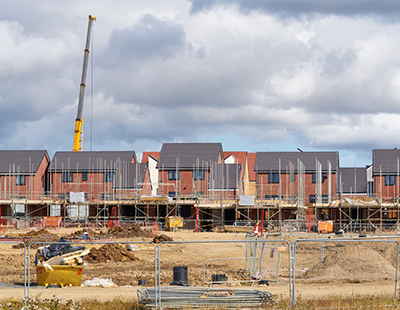It looked into how the pipeline of sites for housing development compares with what might be needed to meet the government’s ambitions for 300,000 net additional homes per year across England.
The report – ‘Tracking Progress’, the second stage of Lichfields’ research – is said to offer a ‘deep dive’ review of monitoring data to establish what happened to the planning permissions granted in a single base year across five case study local planning authorities (LPAs) over a five-year period.
A number of LPAs - Central Bedfordshire, London Borough of Wandsworth, Cheshire East, Colchester, and Stratford-on-Avon - were chosen to provide a geographical spread and mix of types of authority area.
“None of our analysis suggests (at least outside of London) any systemic failure in converting planning permissions to development by the industry,” the report claims.
“The planning and development process is complicated and with risk, the mismatch between planning permissions granted and housing output on a yearly basis is readily explained by the simple matter of the time it takes to progress development through the regulatory stages, the risks associated with small site delivery (and by smaller builders), the overall phasing of build-out on larger sites, and the role of the planning system (via new planning permissions) in facilitating changes to planned development schemes to reflect practical requirements.”
Paul Brocklehurst, chairman of the LPDF, said the research highlights ‘the gross over-simplification in the analysis by the Local Government Association frequently quoted in the national press and by many politicians’ regarding the stock of unimplemented consents.
“Building on Lichfields’ initial Taking Stock report, this latest analysis further highlights the desperate need for there to be an increase in planning consents in the short term if we are to achieve the Government’s target of building 300,000 new homes per annum,” he commented.
“The Government’s Planning White Paper process has exacerbated the impact of the pandemic on the operation of the planning system causing many LPAs to pause, delay and abandon their Local Plan process.
“This, combined with the pressures on LPA planning resources, has led to signs that planning consents for new sites suitable for all housebuilders to build on may be declining. Urgent action is needed to ensure that the housebuilding industry, on top of the labour and supply chain challenges that they face, is not confronted in the near term with an inability to restock its land.”
He continued: “We fully appreciate that the new Secretary of State for Levelling Up, Housing and Communities will want to carefully review the responses to last year’s Planning White Paper proposals before making critical policy decisions. However, we would call on Government to clarify the changes they propose to make to the current planning system quickly, so that local authorities can return to producing their Local Plans, land can be allocated for much-needed housing and the development industry can continue to deliver on the Government’s 300,000 per year new homes target.
“Provided both LPAs and the private sector can respond positively, we are convinced that confidence in the planning system can be restored.
With that in mind, the LPDF has called upon the new Housing Secretary, Michael Gove, to consider taking action to improve the effectiveness of the existing system along the lines of the ‘quick-fix’ solutions contained within its Agenda for Action released earlier this summer, all of which can be delivered without recourse to primary legislation.
“We should all be striving to address the housing emergency that exists in this country to provide the opportunity for all generations to have a place that they can call home. Perhaps then we can say we really are levelling up,” Brocklehurst added.
Andrew Whitaker, planning director at the HBF, insisted that ‘this myth that house builders land bank has been dismissed by a growing number of independent reviews’.
“As this latest research demonstrates, aggregating numbers of outstanding planning permissions misses the ‘story’ behind each and every site that comes forward for development,” he claimed.
“Planning system issues remain the biggest barrier to the industry delivering desperately needed homes and the Government’s housing ambitions. Instead of hiding behind the misleading figures produced by the LGA every year, local planning authorities need to abide by the responsibilities placed on them by the planning system.”
Adopting a very broad-brush approach, the bodies commissioning the research said that, when looking at the number of units granted any type of permission (both full and outline) in a given year, after five years one might expect roughly:
-
3% to 5% of homes granted permission will lapse or stall;
-
10% to 15% of homes granted permission will be superseded at a later date by a fresh permission (and not necessarily harming the pace of delivery;
-
35% to 50% of homes granted permission will have been delivered;
-
35% to 50% of homes granted permission will remain extant but on sites delivering on a phased basis beyond five years.













.jpg)
.jpg)






.png)



Join the conversation
Be the first to comment (please use the comment box below)
Please login to comment